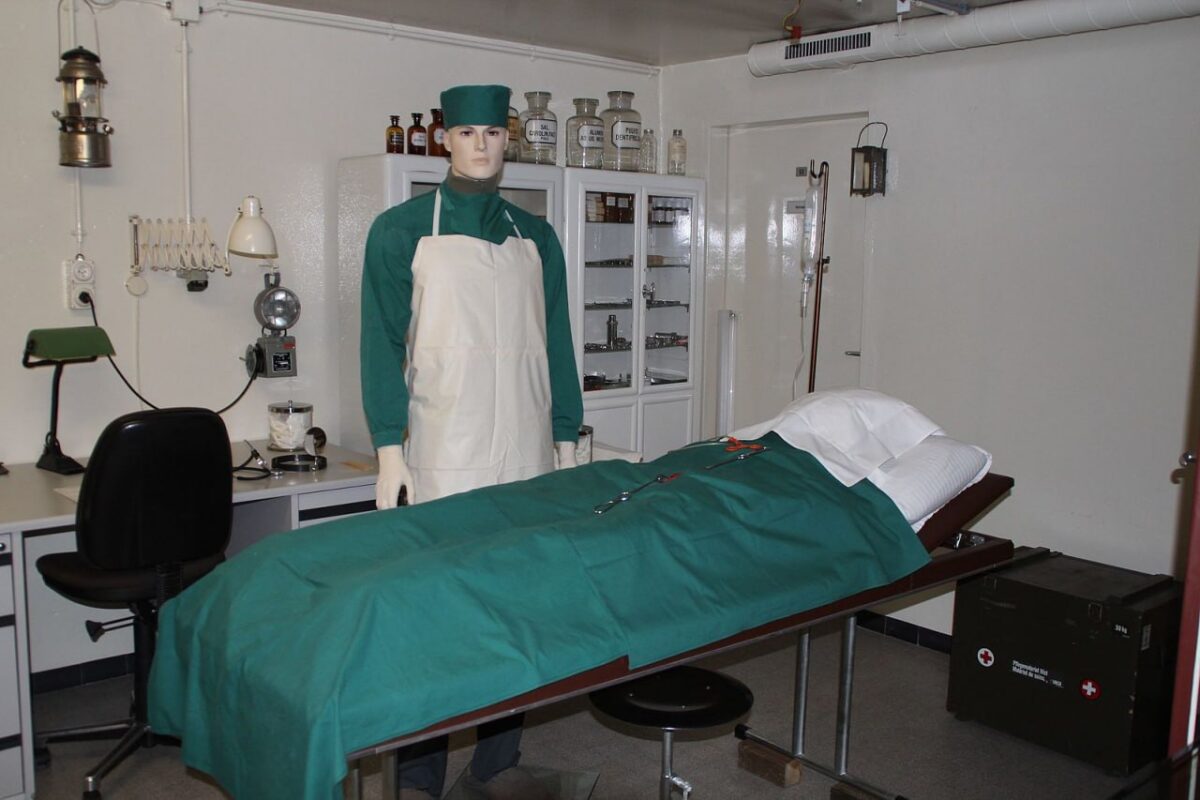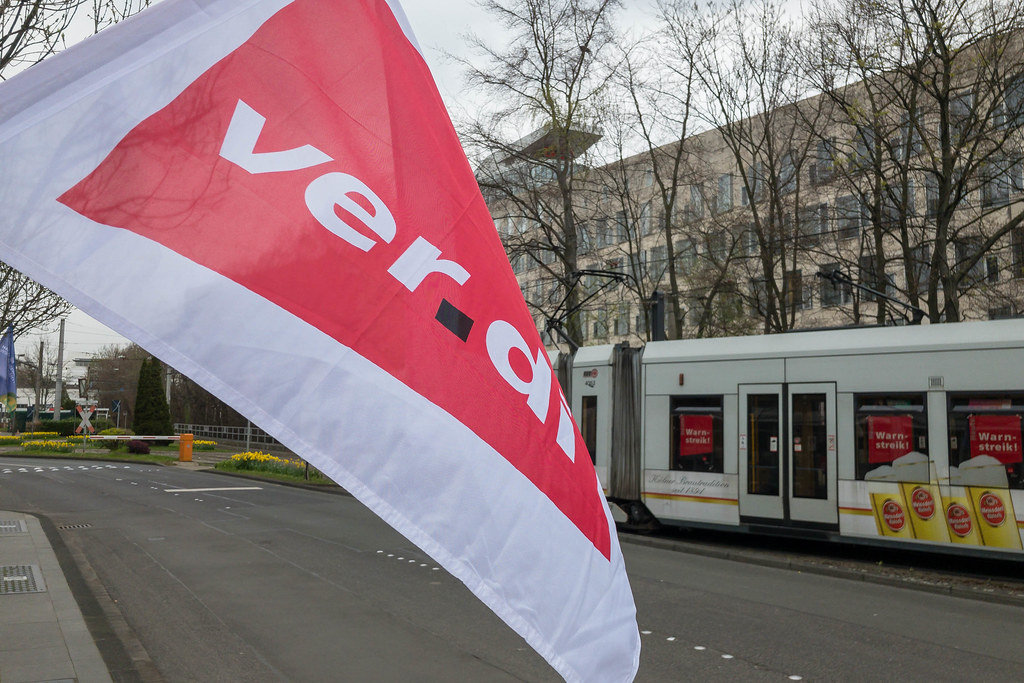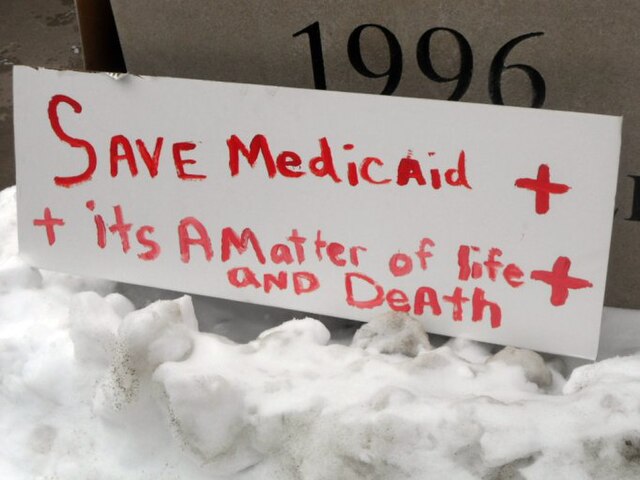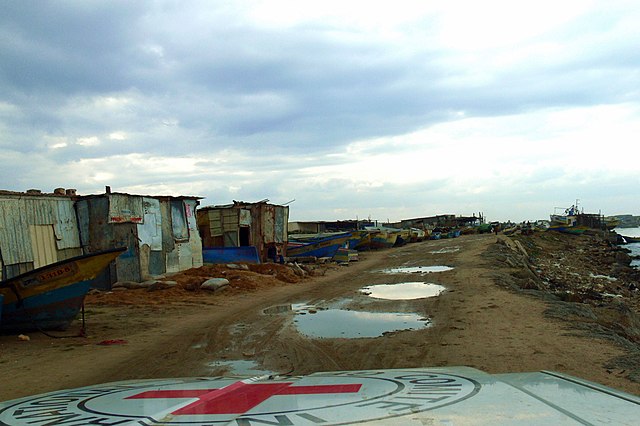These are the SOS NHS demands:
- Approve emergency funding of £20 billion to save lives this winter
- Invest in a fully publicly owned NHS & guarantee free healthcare for future generations
- Pay staff properly: without fair pay, staffing shortages will cost lives
The demands were designed to put pressure on UK Chancellor Rishi Sunak to do something in his spring statement that would go some way to ameliorate the current crisis in the NHS. While Sunak remained deaf to the cries of distress from healthcare workers and the public, the call from ‘SOS NHS’ remains highly pertinent. The momentum of the day of action national protests on 26th February should not be lost.
The cracks in the NHS are now there for all to see
Chronic underfunding and understaffing exacerbated by the Covid pandemic are putting NHS staff and services under intolerable strain. The short-sighted government strategy of relying only on vaccination and anti-viral medicines to control infection, coupled with an absence of basic public health measures and coherent messaging around mask wearing and air quality in buildings, has led to an uncontrolled resurgence of infection. The response to this has not been to step back and take stock, but to continue to promote the dangerous myth that Covid is over, reduce the availability of testing, and cut back on surveillance programmes that have provided vital information about progress of the pandemic and effectiveness of vaccination.
The reality is that you cannot make Covid go away by closing your eyes, but you can heap further suffering on an exhausted workforce, massively increase waiting lists and negatively impact on all other aspects of routine NHS care. There is also a much wider impact from rising rates of infection on society as workers go off sick, 179,000 children are absent from school and Britain suffers a new pandemic of disruption.
Devastating Impact on NHS staff and patients
By the end of March 2022, 1 in 16 people in England were infected with coronavirus, hospital admissions with Covid were running at 2,000 a day and deaths over one week had gone up to 988 (a 35% increase). In addition, 23,000 NHS workers were off sick with Covid, 86% up from previous weeks.
Heartbreaking stories have been emerging from some units such as the emergency department at the Royal Preston Hospital with professional staff pleading to the Trust Executive Team for help. Over the past few months there have regularly been more than 50 patients waiting for a bed, often in excess of 60 hours. Senior staff were sometimes crying with frustration and anger as they have had to resuscitate patients in the waiting room, examine people in the X-ray viewing room, pull patients out of a cubicle to allow someone more unwell to be treated in their former space, and had to watch patients dying without the dignity of privacy.
Elsewhere, a study on emergency department staff at the Royal Derby Hospital showed widespread dismay and burnout with workers past breaking point. Drastic issues with staff shortages, low morale and sickness meant that staff were regularly driven to tears from stress and exhaustion, with additional pressure being applied from the trust board. Instructions to staff had included one to only cry in private, away from the view of patients and visitors.
Ambulance chaos
Hospital trusts in Yorkshire have warned patients they may have to wait for up to 12 hours to be seen at accident and emergency (A&E) departments, after a sharp increase in demand. The West Yorkshire Association of Acute Trusts (WYAAT), which covers six hospitals in West Yorkshire and Harrogate, has issued a plea for patients to attend their local A&E only in ‘genuine life-threatening situations’.
Ambulance services too are stretched beyond the limit. People are literally dying in the back of ambulances and up to 160,000 coming to harm in a year because they cannot be transferred into A&E departments. The West Midlands Ambulance Service admitted that it was causing catastrophic harm to patients through delayed transfer and the knock on effect of reaching patients too late.
Appalling waits for ambulances in England leaving lives at risk
The Royal College of Emergency Medicine (RCEM) estimated that there were at least 4519 excess deaths in England in 2020-21 as a result of overcrowding and stays of 12 hours or longer in emergency departments. A report by the Association of Ambulance Chief Executives showed that the monthly average number of patients with handover delayed >60 minutes in 2021 had almost doubled to 15,500 (the target for handover time is less than 15 minutes). Discussions about how to prevent such delays has gone on for many years while things have got steadily worse.
The recent plans to put ambulance patients in tents outside A&Es was described by Katherine Henderson, the President of the RCEM, as ‘a bad, borderline immoral bodge job to treat the symptom rather than cause’ and a ‘danger to patients’ health and dignity’. Dr Henderson has also said the pressure on the NHS was now so severe that it was breaking its ‘basic agreement’ with the public to treat the sickest in a timely way, commenting ‘the true barrier to tackling this crisis is political unwillingness; the current situation is breaking the workforce and breaking our hearts’.
A&E – the canary in the mine
Gridlock in A&E highlights problems in the system at large. The reality is that reduced hospital bed numbers (more than halved over the past 30 years), together with poor community services and lack of social care support preventing patient discharge, mean that when A&E is full, patients can neither be moved out to wards nor in from waiting ambulances; ambulance crew (put under incredible pressure) are not equipped to provide the care needed by sick patients stuck in their vehicles, and cannot answer other emergency calls. It is estimated that in Scotland alone, an additional 1,000 beds are needed to tackle the bottlenecks in A&E, and meanwhile, ambulance crews suffer severe stress and anxiety resulting in sickness absence.
Politicians are misrepresenting the situation and refusing to take responsibility
Conservative politicians and much of the media like to blame the current situation on the NHS itself instead of owning the problem and accepting it has come about as a consequence of deliberate policy decisions. As Toynbee points out, while ministers may mock the ‘magic money tree’, they have no problem with their own ‘magic efficiency tree’ as they double impossible ‘efficiency savings’ targets to 2.2% for the NHS to squeeze out this year. Chronic underfunding and poor pay and conditions have contributed hugely to understaffing – the major factor preventing the NHS from working effectively for the benefit of patients.
What the public think
Public satisfaction with the NHS has recently been shown to have fallen to its lowest ever at only 36% of those surveyed. Most respondents were dissatisfied with the length of time for a GP or hospital appointment, but almost half were also critical of low staffing numbers and inadequate government spending.
Notably, only 16% expressed dissatisfaction with the quality of care received. The graphical representation of the figures from this survey over years shows clearly that discontent relates to overall funding, with a steady rise in satisfaction from around 2005 peaking at 2010, and then falling to its current low over the years of austerity. From 2010 to 2019 the NHS received the lowest annual increase in real terms funding since the 1950s.
However, it is striking that a study by the Institute of Public Policy Research in March this year showed that public support for the core principles of the NHS remains strong. Most people – from across regions, demographic lines and party-political allegiances – support a universal (88%), comprehensive (88%), free at the point of need and tax-funded health system (88%).
Clearly those in power are failing to give the public what it wants, while negative consequences of failure to invest in the NHS drives those who can afford to pay to use the private sector. This is a core element in government policies aimed at reducing public services and eroding the social wage.
Workforce
A prolonged funding squeeze combined with years of poor workforce planning, weak policy and fragmented responsibilities mean that NHS staff shortages have become endemic. With around 100,000 vacancies, there has been no workforce strategy since 2003. The number of General Practitioners has fallen every year (down almost 1,500) in England since government pledged to increase them in 2015. The NHS Operating Framework for 2022/23 merely says that NHS England and NHS Improvement ‘will work with systems to develop workforce plans’.
As some have observed, we don’t need more pledges or rhetoric, nor more analysis and consultation – we need a relentless focus on implementing solutions, resourcing them properly, and reporting progress. Bizarre then that the government has consistently opposed an amendment to the Health and Care Bill calling for publication of independently verified assessments every other year on current and future workforce numbers needed for health and social care services.
Ockenden Report on Shrewsbury and Telford Maternity Services
Following an exhaustive investigation, this service was found to have failed to investigate, failed to learn and failed to improve (and therefore often failed to safeguard mothers and their babies at one of the most important times in their lives), resulting in many unnecessary deaths and injuries. This is a stark reminder that the NHS, with around 1.5 million workers, does not always do things well, while the important thing is that the right lessons are learned and implemented. Examples of astonishingly poor and unacceptable practice are set out in the recent Ockenden report, problems highlighted over the years by KONP affiliate ‘Shropshire Defend Our NHS’, and by campaigners in Liverpool.
Those hostile to the NHS use such examples as evidence that the fundamental model of a publicly funded and delivered service is flawed rather than looking to address issues which have undermined a system that for many years was recognised internationally as the most cost efficient and fair in the world. There is no doubt that the maternity services in Shropshire were indefensibly poor, causing huge suffering to families. The list of failures included leadership, teamwork, failure to follow clinical guidelines and a failure to listen to patients. What is also prominent throughout the review is the catastrophic shortages of midwives, medical staff and other maternity healthcare workers and the impact these shortages have had on care. The first recommendation in the report (of which surely the government must take heed?) is for ‘a robust and funded maternity wide workforce plan, starting right now, without delay and continuing over multiple years’.
One of the many important questions raised by Shrewsbury is how the NHS can be made more accountable to patients. Measures are needed not only to rebuild and reintegrate the NHS but also to democratise it as a service accountable at local level to, and organised by staff, patients and wider community groups. Community Health Councils (CHC) were established in 1974 to give a voice in the NHS to patients and public but abolished by the Blair government in 2003; they had an important role in helping people who had complaints against NHS services. CHC were replaced first by Local Involvement Networks, and then by Healthwatch, neither of which organisations had the same resources, statutory powers or responsibilities as the CHC. Radical proposals include democratic control of the NHS by neighbourhood health committees, to which people are elected and which feed up to larger regional and national elected committees for overarching planning.
Unfortunately, the Health and Care Bill moves accountability further away from communities. The Bill will severely limit the representation of local authorities on the main Integrated Care (IC) Board where plans and decisions will be made, and relegate them to the IC Partnership, tasked with developing a strategy that is not binding on the main Board. Furthermore, the Secretary of State for Health will assume decision making power to impose local service reconfigurations, the right and power of scrutiny by local authorities of significant health changes will be weakened or abolished and the right of access by the public to board meetings and papers may also be threatened. There is little expectation that IC Boards will put effort into developing and implementing a strong and independent mechanism enabling service users to contribute equally alongside NHS and local government partners.
Conclusions
To put the NHS back on its feet, make it responsive to patients, resilient, caring towards staff and able to meet the huge backlog of work, the first things needed are adequate funding and a workforce plan that is implemented. This should include a significant pay rise to compensate for years of pay stagnation and now rising inflation and cost of living. There must also be a commitment to long term investment in the NHS as a publicly funded, delivered and accountable service. If anyone doubts this, I would refer them to Donna Ockenden’s report which stated categorically that the budget for maternity services must be increased by £200-350 million per annum with immediate effect and in line with recommendations from the parliamentary Health and Social Care Committee.
The Ockenden report noted the very significant pressures in maternity services in the recruitment and retention of midwives and obstetricians (2000 and 500 more posts needed respectively) calling for workforce planning, reducing attrition of maternity staff and providing the required funding for a sustainable and safe maternity workforce.
To those who say only culture change is needed in the NHS together on a focus on reducing waste, I would quote Ockenden: ‘the demand for better funding will ensure safer outcomes for more women and families, reducing the risk of unnecessary loss of life, injury and resultant heartbreak…… Only with a robustly funded, well-staffed and trained workforce will we be able to ensure delivery of safe, and compassionate, maternity care locally and across England’. As one member of staff quoted in the report also reflected: ‘I think the lessons from this inquiry are going to be transferable to the whole NHS’.




